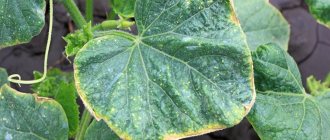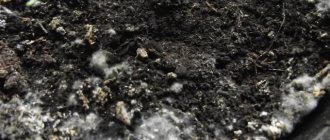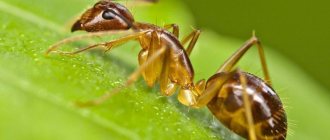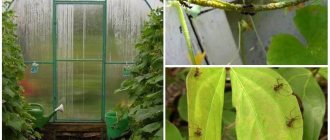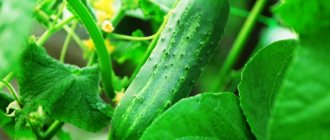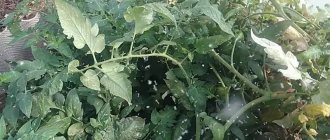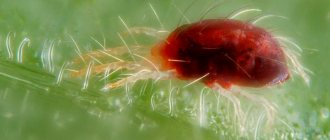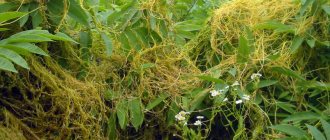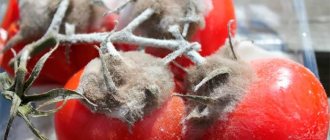Gardeners prefer to grow seedlings themselves. Sometimes white and black midges appear on it. Insects attack tomatoes, eggplants, cucumbers, and cabbage. The larvae destroy the root system and the seedlings will not bear fruit. Therefore, you need to get rid of pests immediately.
What types of midges are there?
The group of insects called midges includes house flies, fruit flies, soil (fungus) gnats, lacewings, and whiteflies. Drosophila fruit flies prefer to feed on rotting plant remains, but they do not refuse fresh seedling juice.
Green lacewings do not harm plants because they are predators and feed on aphids that settle on seedlings. Fungus gnats (sciara fly) in the larval stage eat up the roots of the seedlings. Whiteflies, both in adulthood and in the larval stage, are capable of completely destroying a plant.
Causes of midges
Midges in apartment conditions can appear at any time of the year. The main thing is that the temperature and humidity correspond to their living conditions. They are able to fly into a living space from a damp basement through ventilation shafts, pipes, and hoods; through open vents, windows, doors; hatch from eggs laid on fruits or vegetables intended for winter storage.
They can be purchased along with soil for seedlings. A trash bin taken out at the wrong time or a very wet soil mixture not treated before sowing seeds become a refuge for insects and their larvae.
General symptoms
Common symptoms include the following:
Consequences of a midge bite
- increased body temperature (possibly up to 39-39.5˚C);
- lymph nodes increase in size and become painful on palpation;
- the heart muscle begins to work in an increased mode (tachycardia);
- blood pressure decreases.
The degree of manifestation of the symptom complex: local and general reactions of the body depend on a number of factors.
These include:
- bites and their number;
- age of the victim;
- the state of immunity of a person who has been bitten by a midge;
- tendency to allergies;
- individual intolerance to midge saliva that accompanies the bite;
- secondary infection entering the wound.
With different combinations of these factors and the degree of their development, the clinical picture changes, as well as the recovery time of the bitten person. The most dangerous complication is anaphylactic shock (occurs rarely). If it occurs, immediate medical attention, treatment and hospitalization of the victim is required.
There are midges in the seedlings, what to do?
Midges feel great where it’s warm, where leftover food is rotting in a garbage bag, pieces of fruit are lying around out of sight, or compote is turning sour in a cup. But, if everywhere is clean and dry, midges have to look for a place where they can find food and lay eggs.
They will always find the conditions necessary for their nutrition and reproduction on the surface of a waterlogged soil substrate in a box with seedlings. Therefore, the first thing that needs to be done to deprive insects of their breeding places is to dry the soil under the plants.
Do not water the seedlings until the top layer of soil dries out. If it happens that after watering the earthen ball becomes too wet, you need to try to dry it quickly, for example, by placing pots with seedlings over heat sources. You have to be careful not to cook the plants.
If excess water drains into the lower pan, the liquid will need to be drained so that it does not rise through the bottom of the container to the upper part of the pot again. Then watering can be done through this pan by adding water into it.
How to get rid of midges using folk remedies
It is not always possible to dry the soil quickly, and the number of larvae in the ground may be such that it will be impossible to delay. Then you will have to transplant the plants into new soil, other pots or boxes, having first sterilized everything. Simultaneously with transplantation, measures must be taken to destroy adult flying individuals.
You can start by using an electric flying insect killer or a fumigator with mosquito and fly repellent. If the seedlings are located in a place where there is no electrical wiring, then it is necessary to hang sticky fly traps in the nursery or set fire to a mosquito coil.
The preparation of soil for transplanting seedlings must be taken with full responsibility. It is not enough to simply buy soil mixture at a garden store and pour boiling water over it. You need to put it in the microwave for 2-3 minutes or fry it in the oven for 20-30 minutes. If this cannot be done, then to the treatment of the land with boiling water, add subsequent treatment with water with potassium permanganate diluted in it. The color of the water should be deep pink. Boxes, trays, pots and tools that will be used during transplantation are subject to disinfection.
Before transplanting seedlings into it, the soil must be dried until it becomes a crumbling lump in your hands.
To prevent eggs and larvae of pests from getting into the fresh soil again, the roots of the plant and the lower parts of the stems are freed from the soil, dipped for 3-5 seconds in a weak solution of potassium permanganate and carefully inspected.
If there are no pots in which to transplant the plants, you can replace only the top 2-3 cm of soil on the surface of the pot. A few granules of soil insecticide are added to the new layer of soil. After this, a layer of drainage materials 1 cm thick is laid on the soil surface.
Signs of infection
It is easy to recognize plant damage by the following external signs:
- yellowing and curling of leaves;
- uneven ripening of fruits;
- discoloration of the internal tissues of tomatoes;
- formation of plaque on the upper leaves;
- presence of insects on the inside of the leaf;
- when you touch the plant, a cloud of midges rises.
What kind of pests could these be?
Many insects can parasitize nightshades. There are two types of midges living on tomatoes: some pests are black in color and are constantly on the move, not inhabiting the plant. Other midges are white and settle on the leaves of seedlings.
The most dangerous pest is the greenhouse whitefly. Her body size is 3 mm. The insect prefers to inhabit the inside of the lower leaves of seedlings, where it lays eggs.
Whiteflies carry viral diseases - leaf curl, chlorosis and jaundice. If measures are not taken in time, this may affect the growth, flowering of the plant, its leaves and fruits.
The moths themselves are not so dangerous - they can be easily eliminated using folk or chemical means. However, it is not so easy to deal with insect larvae - they have protection in the form of a special coating, which reduces the effectiveness of the drugs. In addition, if you use the same products, insects can develop immunity to them.
What harm can they do?
White midges are the most dangerous pests of nightshades. Despite their small size, the damage they cause can be colossal. As soon as midges or their larvae attach to the plant, they begin to consume its sap. Because of this, the seedlings begin to experience a lack of nutrients, which affects their fruits. As a result, the green mass of the plant dries out and falls off, and the fruits wrinkle.
The vital activity of small midges leads to the formation of plaque on the top of the leaf, which can cause it to curl. At first it has a transparent color, which later turns black, indicating the formation of sooty fungi. Parasites appear from insect secretions. They cover the plant stem and fruits.
How to water seedlings against midges
The most effective way to prevent pests from laying eggs in the soil is to allow the top layer of soil to dry out and loosen between waterings. Under tender sprouts, the soil in small containers is loosened using a toothpick; for large seedlings in large pots, loosening the soil can be done using a table fork.
How to get rid of aphids on seedlings using folk remedies
Moderately dry soil, allowing air to reach the roots, will prevent them from rotting and becoming food for pest larvae that eat rotting plant tissue. Therefore, a midge that accidentally flies into a room with seedlings will not lay eggs in dry, loose soil.
You can determine the degree of soil infestation with midge larvae by replanting several plants and simultaneously examining the soil. If there are only individual larvae in it and there are no balls of worms, then you don’t have to replant all the plants, but treat the soil with garlic infusion.
To do this, chop a large head of garlic and pour 1 liter of warm water for a day. The soil with seedlings is watered with infusion at least 3 times. After each watering, the soil is allowed to dry out. In order not to harm the plant, do not water all the pots at once, but test the effect of the infusion on 1-2 plants.
Pest identification
It is quite easy to detect such a small parasite on foliage.
Just look at the general condition of the tomato bushes. If you are a conscientious owner, you water and loosen your garden on time, as well as timely processing and fertilizing, but the tomatoes still look withered and lethargic, you should pay attention to the underside of the leaves
Aphids and their larvae most often occupy the top of the plant, devouring young tender foliage. Another sure sign that there are aphids in your garden is the appearance of ants. For them, aphids are an excellent source of essential sugars.
There are different types of aphids, but the most dangerous are the winged ones, which are capable of flying long distances in a short time. The parasite feeds on the juice of young tomato foliage, and at such a rate of reproduction it can cause significant harm to the plant and even destroy it.
Aphids not only eat the plant and suck out the juices necessary for development, but they can also infect it with various viral diseases. In addition, the ability to bear fruit is significantly reduced in an adult plant. After all, along with the foliage, the aphids also eat the flowers, from which the ovary eventually appears.
Below is a photo of black midge aphids on tomatoes; as soon as this pest is identified on the bushes of the plant, measures should be taken immediately to destroy it.
Insecticides against midges on seedlings
The fight against small flying insects and their larvae in the soil will be effective if you simultaneously use preparations that are used for surface spraying of plants and soil insecticides. They begin work by studying the instructions and determining the required doses.
For processing, choose a non-residential premises, for example, a barn, balcony or loggia. If there is no place where the plants can be transferred, then the treatment is carried out in protective clothing, a bandage, goggles and gloves. All children, animals and adults not involved in the treatment must leave the premises.
The treatment is carried out with the windows closed. All food, clothing, and dishes are put in closets. Before starting work, some of the insects can be collected with a vacuum cleaner. Treatment begins by adding soil preparations to the ground and then spraying the plants.
Manufacturers' recommendations are used to obtain working solutions. The soil is watered with soil preparations at least twice with an interval of 5-7 days. After finishing work, the room is ventilated and wet cleaned. It is important to rinse hard-to-reach places where animals and small children can get into.
Preparations that destroy pest larvae in the soil include “Grom-2”, “Bazudin”, “Pochin”, “Mukhoed”. For spraying plants, “Karbofos”, “Aktaru”, “Inta-vir”, “Agravertin”, “Kinmiks”, “Fitoverm”, “Aktellik” are used.
Fumigators
The work of fumigators in the fight against midges will be effective if they are used not just for one day, but at least for 5-7 days. Fumigators (fumigators for premises) are used with connected flasks with liquid fumigants (chemicals poisonous to insects) or with inserted porous plates impregnated with the same poisons.
To combat fruit flies, use the Transfluthrin liquid from Bayer AG (Germany), which the manufacturers recommend as a safe product for humans, and the Raptor fumigator with a nerve-paralytic substance that is lethal to insects.
New product on the market - fumigators
There are innovative products that are produced in the form of plates. It is enough to insert them into a special device that will heat the surface and cause it to release chemicals into the air.
The insecticide included in the composition has a detrimental effect on most insects. It is harmless to children and animals. The plate needs to be changed every 12 hours.
There is a more economical option - a bottle of liquid. It can be left in the fumigator for several days.
Before purchasing, read the instructions for use. Each product has its own affected area - from 20 sq.m to 50 sq.m. Popular products are “Raptor” and “Transflutrin”.
White and black midges on seedlings, how to get rid of them at home
At home, flying pests are repelled from seedlings. Midges do not like the smell of cinnamon and hot ground pepper. The ground under the plants is sprinkled with either one of these products, having previously ground them, or with a mixture of them in a 1:1 ratio.
In addition, you can use tobacco dust or ground tobacco. Pots with flowering geraniums are placed next to the seedlings. Midges cannot stand the smell of garlic and dry orange peels. They are laid out on the surface of the soil. The edges of the seedling containers can be lubricated with star balm, which contains many different essential oils.
How we defeated the black midge on seedlings
What to do if midges are in the soil of seedlings
Flying insects should not be allowed to enter the house and lay eggs in the ground with seedlings. In order not to bring midges into the room along with purchased fruits and vegetables, it is necessary to hide the peeled peels in tied garbage bags.
There is no need to pour leftover tea or coffee into boxes or glasses with seedlings, because once they rot, they will become a desirable treat for midges. For seedlings, it is necessary to use containers with large drainage holes to prevent stagnation of water on the surface of the earth clod.
Prevention and control of sciarid flies
Repelling insects and treating the soil to remove their larvae will be the first stages of the fight for the future harvest. Do not forget that midges are harmful not only because they harm plants. It can affect children, whose delicate skin can be bitten by adult females of certain types of small insects that feed on protein foods.
Therefore, it is necessary to fight midges not only for the sake of the harvest, but also for the sake of the health of your loved ones. Of course, humane methods of repelling tiny insects are preferable, but very often this does not help. There are many methods to combat midges; you just need to make the right choice.
Meet the whitefly
It is not difficult to distinguish whiteflies from other seedling pests. Adults look like tiny snow-white moths - their body length does not exceed 3 mm. They usually huddle on the inside of leaves and, at the slightest alarm, fly up above the plants.
Here the seedling moth, as the whitefly is also called, lays eggs and reproduces. It is difficult to see the eggs and larvae with the naked eye - they are very small. The fertility of females is amazing: one individual can give birth to two hundred recruits, who immediately begin to cause mischief.
In the warmth of the room, the whitefly feels excellent, especially if an inexperienced gardener sins by excessively watering the seedlings, rarely ventilates the room and does not adhere to the optimal planting scheme. Under such conditions, the pest awakens a ravenous appetite and an insatiable desire to reproduce.

